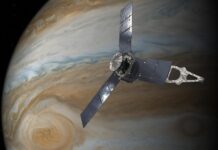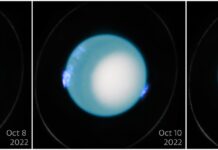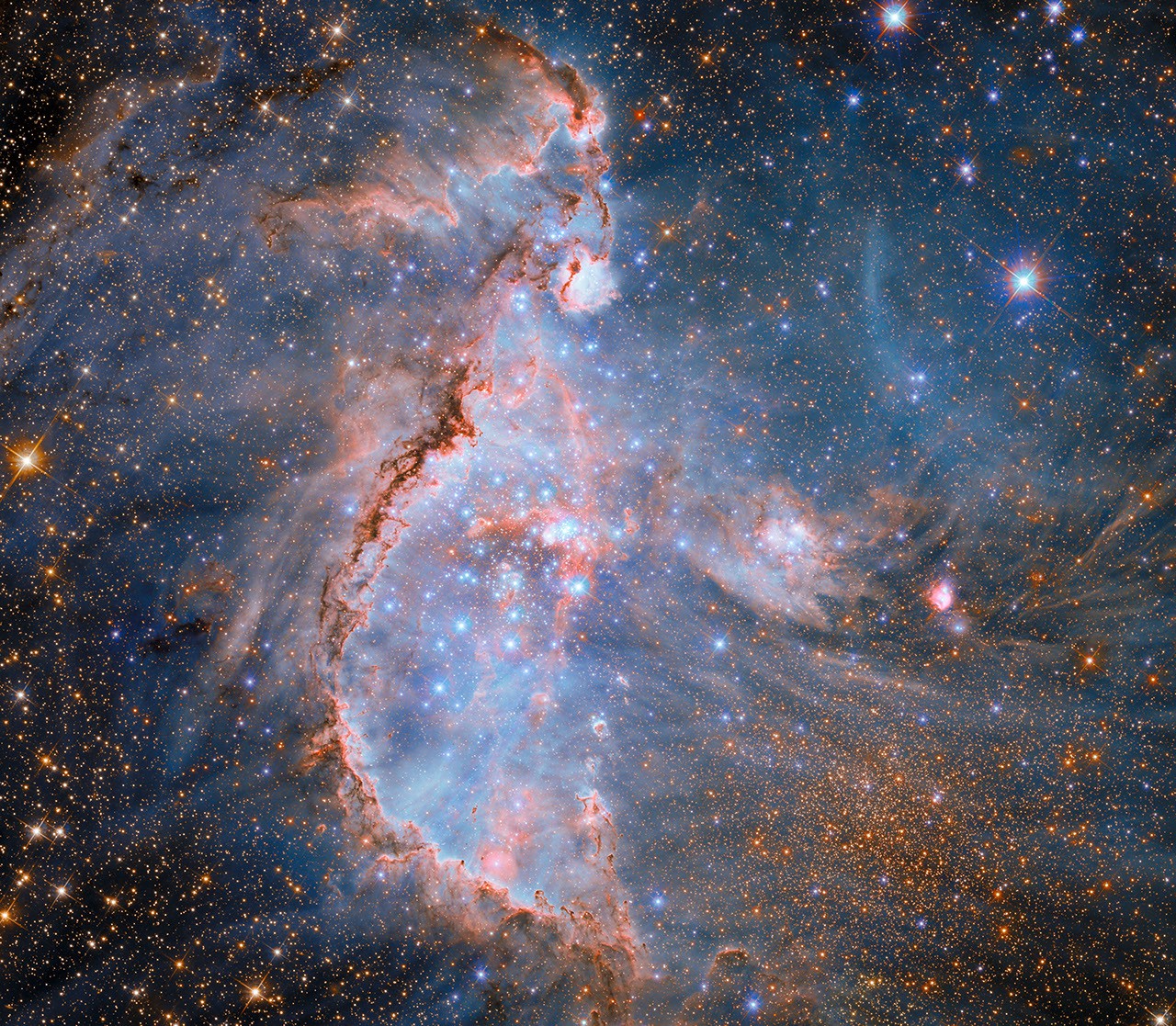Celebrating 35 Years of Hubble: A New Glimpse into the Star Cluster NGC 346
As part of the 35th-anniversary celebrations of the Hubble Space Telescope, the European Space Agency (ESA) has unveiled a breathtaking new series of images. These images revisit some of the most captivating celestial targets previously observed by Hubble. By incorporating the latest data and utilizing advanced image processing techniques, these new visuals offer a fresh perspective on the cosmos.
Among the highlights of this series is an image of the young star cluster NGC 346. While both the James Webb Space Telescope and the Hubble Space Telescope have previously captured images of this cluster, this latest release is unique. It is the first to amalgamate Hubble’s observations across infrared, optical, and ultraviolet wavelengths, resulting in a remarkably detailed depiction of this active star-forming region.
A Celestial Marvel: NGC 346
NGC 346 resides in the Small Magellanic Cloud, a satellite galaxy of the Milky Way located approximately 200,000 light-years away in the constellation Tucana. The Small Magellanic Cloud is characterized by a lower abundance of elements heavier than helium, which astronomers refer to as "metals." This composition mirrors the conditions that prevailed in the early universe, making it a fascinating subject for study.
In this image, NGC 346 is home to an astounding array of more than 2,500 newborn stars. The most massive among these stars, significantly larger than our Sun, radiate an intense blue light. The star cluster is enveloped in a glowing pink nebula, interspersed with dark, snakelike clouds, all sculpted by the brilliant stars within the cluster.
Unraveling the Mysteries of Star Formation
Hubble’s remarkable sensitivity and resolution have been pivotal in uncovering the secrets of star formation within NGC 346. By analyzing two sets of observations taken 11 years apart, researchers were able to track the movements of stars within the cluster. These observations revealed a spiraling motion, with stars gradually moving toward the cluster’s center. This spiraling pattern is driven by a stream of gas from outside the cluster, which fuels the formation of new stars at the heart of the turbulent cloud.
The stars within NGC 346 are not merely passive inhabitants; they play an active role in shaping their environment. These hot, massive stars emit intense radiation and powerful stellar winds, which interact with the surrounding gas, carving out a bubble within the nebula.
The Significance of Nebula N66
The nebula surrounding NGC 346, known as N66, stands out as the brightest example of an H II region in the Small Magellanic Cloud. H II regions are clouds of ionized hydrogen, set aglow by ultraviolet light from hot, young stars like those found in NGC 346. The presence of N66 serves as an indicator of the cluster’s youth, as an H II region remains illuminated only as long as the stars that power it continue to burn brightly—a span of merely a few million years for the massive stars depicted here.
Hubble: A Legacy of Discovery
The Hubble Space Telescope, a joint project of NASA and ESA, has been operational for over three decades. It continues to make groundbreaking discoveries that deepen our understanding of the universe. Managed by NASA’s Goddard Space Flight Center in Greenbelt, Maryland, Hubble’s mission operations are supported by Lockheed Martin Space in Denver. The Space Telescope Science Institute in Baltimore, operated by the Association of Universities for Research in Astronomy, conducts Hubble’s scientific operations for NASA.
Hubble’s enduring legacy is a testament to international collaboration in the pursuit of knowledge. As we celebrate 35 years of this iconic telescope, the newly released images of NGC 346 offer a vivid reminder of the beauty and complexity of the universe.
Understanding H II Regions
For those unfamiliar with astronomical terminology, an H II region is essentially a cloud of ionized hydrogen gas. These regions are typically found surrounding hot, young stars and are characterized by their bright glow. The ionization process is driven by the ultraviolet radiation emitted by these stars, which excites the hydrogen atoms, causing them to emit light. H II regions are crucial in the study of star formation, as they often signify areas where new stars are being born.
The Role of the Small Magellanic Cloud in Astronomical Research
The Small Magellanic Cloud, a satellite galaxy of the Milky Way, provides a unique laboratory for astronomical research. Its relatively low metal content offers insights into the conditions that prevailed in the early universe. By studying regions like NGC 346, astronomers can gain a deeper understanding of the processes that governed star formation and galaxy evolution in the universe’s formative years.
The Future of Space Observation
While Hubble has been a cornerstone of space observation for decades, the recent launch of the James Webb Space Telescope heralds a new era of discovery. With its advanced capabilities, James Webb is poised to complement Hubble’s observations, providing even deeper insights into the mysteries of the cosmos. Together, these telescopes will continue to expand our knowledge of the universe, unveiling its secrets one discovery at a time.
Concluding Thoughts
The ESA’s release of new Hubble images for its 35th anniversary not only celebrates the telescope’s storied history but also underscores its ongoing relevance in the field of astronomy. As we look forward to future discoveries, the image of NGC 346 serves as a beautiful reminder of the wonders that await us in the vast expanse of the universe. For those interested in viewing the full image series, more information can be found on the ESA/Hubble website.
For more Information, Refer to this article.


































